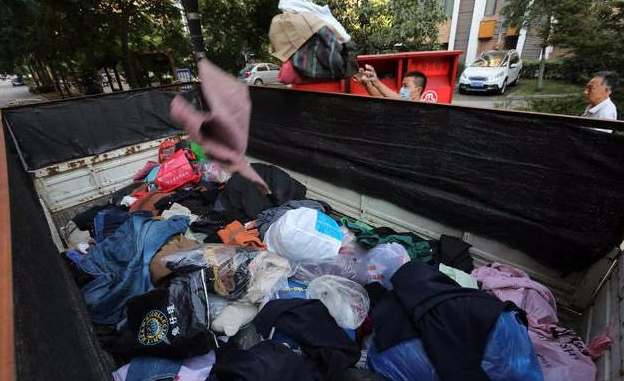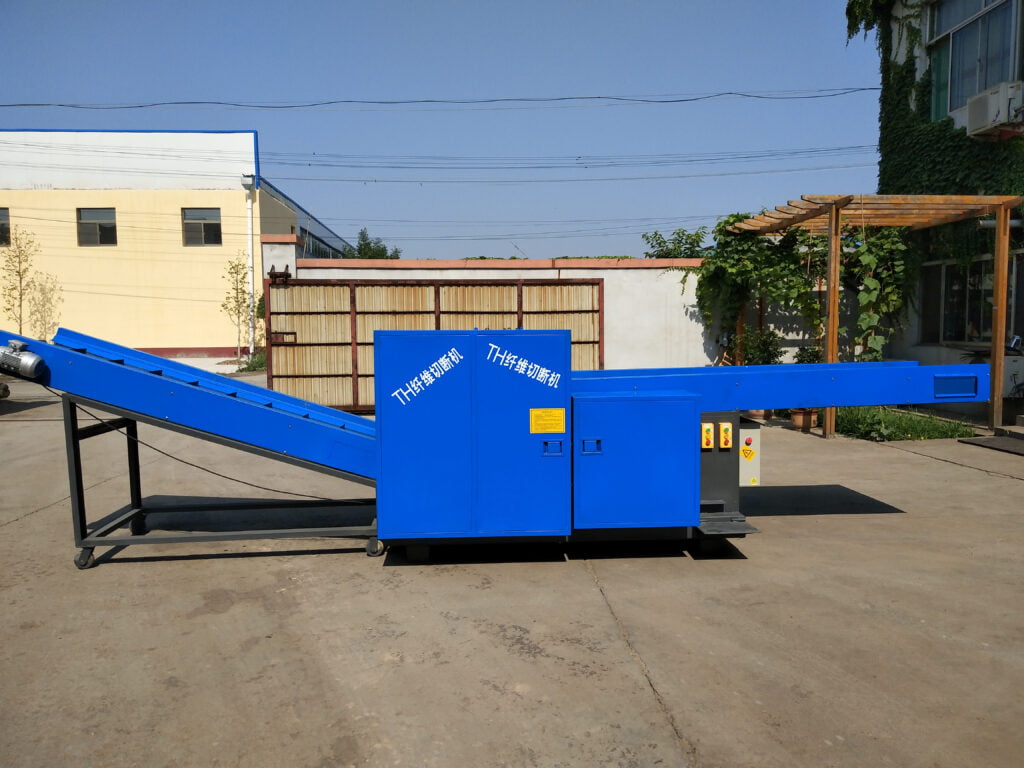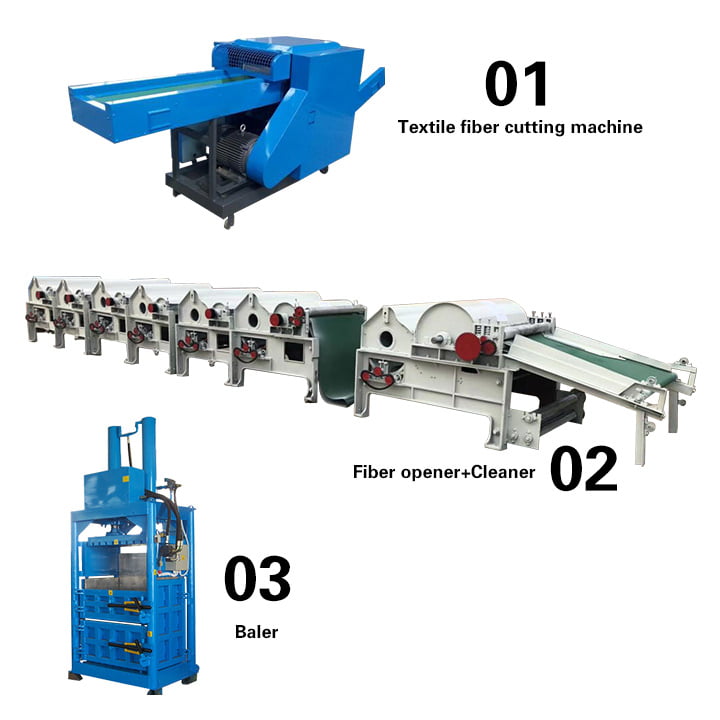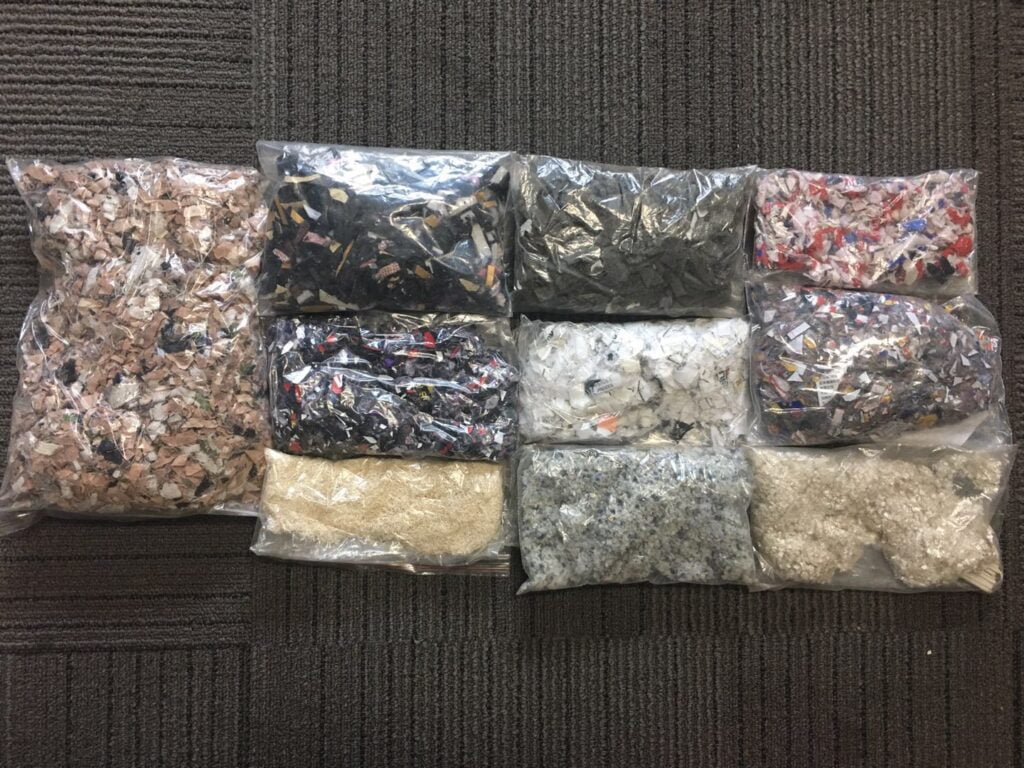La eliminación de textiles desechados no está estandarizada, lo que traerá una gran carga al medio ambiente. Por lo tanto, el reciclaje textil ha sido promovido enérgicamente en los últimos años. Entonces, si desea llevar a cabo un nuevo negocio de reciclaje textil, ¿cómo debería elegir una línea de reciclaje textil adecuada para tener un mayor valor comercial?
¿Cuáles son las formas de reciclar los textiles?
Los métodos de reciclaje de textiles generalmente incluyen organizaciones sin fines de lucro, actividades de reciclaje en campus o comunidades y contenedores especiales para reciclaje de ropa instalados en lugares fijos.

Después de estas formas de reciclar, después de escoger la ropa con valor de desgaste y uso, el resto son textiles sin valor. Esta parte de los textiles solo puede empaquetarse y transportarse al sitio de procesamiento de reciclaje de textiles para su reciclaje y procesamiento.
Determinar la escala de procesamiento del reciclaje textil.
Cuando existe una ruta fija de reciclaje textil, es necesario determinar el tamaño específico de la fábrica de procesamiento y el número aproximado de trabajadores necesarios para operar.
Si se trata de una gran fábrica de ropa dedicada al reciclaje de tejidos, necesitará realizar un presupuesto a gran escala. Debido a que la fábrica de ropa producirá una gran cantidad de retales de tela todos los días, la cantidad de estos retales acumulados será inconmensurable.

En cambio si se trata del reciclaje de ropa reciclada diariamente. Solo necesita presupuestar de acuerdo con la escala de procesamiento normal, que es adecuada para procesadores de reciclaje pequeños y medianos.

Determinar la línea de reciclaje textil según la escala de procesamiento.
En la actualidad, la máquina de corte más ideal es la máquina de corte de fibra. Esta máquina de corte de fibra puede completar el corte textil de manera rápida y eficiente. Hay dos tipos de modelos grandes y pequeños para que los clientes elijan.
Luego, necesita eliminar impurezas y cortar la tela después del corte. La combinación de la máquina de apertura y la máquina de limpieza es la mejor opción para completar este paso. Las dos máquinas no son de modelo distinguible, pero la máquina de resorte claro se determina según la escala de producción para determinar el número de rodillos. Cuanto más material se requiera para el procesamiento o si el cliente desea material para un procesamiento posterior. Necesitará estar equipado con más de una máquina de rodillos.

Encuentre un lugar para la producción y el procesamiento.
Cuando se determina la escala específica de producción y la línea de procesamiento de producción. Es necesario encontrar un sitio adecuado para el procesamiento.
Debido al proceso de procesamiento de los textiles, es inevitable la producción de amentos voladores. Especialmente al procesar algodón, habrá una gran cantidad de amentos de algodón flotando en el aire.
Como resultado, las fábricas deben ubicarse en zonas escasamente pobladas. Y es necesario instalar el equipo de eliminación de amentos adecuado.
La cuestión del reciclaje textil requiere atención
- Antes del inicio formal de la operación del línea de reciclaje textil, el operador debe tener formación profesional. Para evitar emergencias y pánico cuando la máquina está funcionando;
- Los operadores deben equiparse con máscaras profesionales durante la operación para evitar que el algodón fino entre en el tracto respiratorio y afecte al cuerpo humano.

